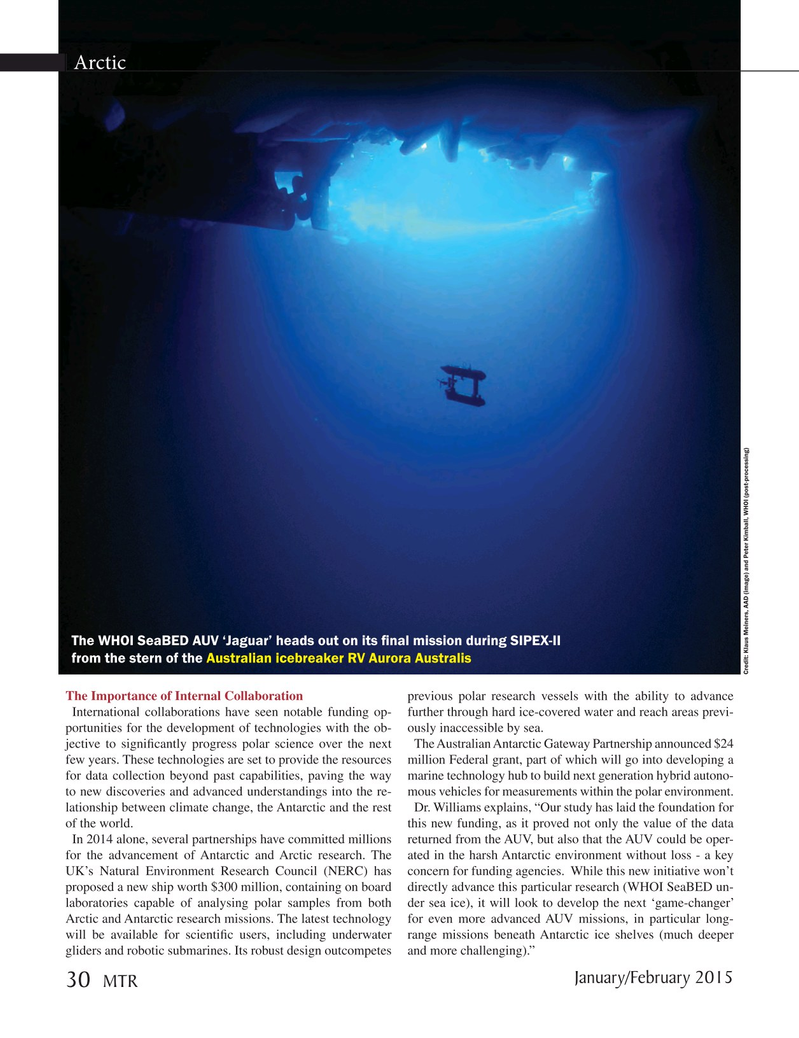
Page 30: of Marine Technology Magazine (January 2015)
Underwater Vehicle Annual: ROV, AUV, and UUVs
Read this page in Pdf, Flash or Html5 edition of January 2015 Marine Technology Magazine
Arctic
The WHOI SeaBED AUV ‘Jaguar’ heads out on its ? nal mission during SIPEX-II from the stern of the Australian icebreaker RV Aurora Australis
Credit: Klaus Meiners, AAD (image) and Peter Kimball, WHOI (post-processing)
The Importance of Internal Collaboration previous polar research vessels with the ability to advance
International collaborations have seen notable funding op- further through hard ice-covered water and reach areas previ- portunities for the development of technologies with the ob- ously inaccessible by sea.
jective to signi? cantly progress polar science over the next The Australian Antarctic Gateway Partnership announced $24 few years. These technologies are set to provide the resources million Federal grant, part of which will go into developing a for data collection beyond past capabilities, paving the way marine technology hub to build next generation hybrid autono- to new discoveries and advanced understandings into the re- mous vehicles for measurements within the polar environment. lationship between climate change, the Antarctic and the rest Dr. Williams explains, “Our study has laid the foundation for of the world. this new funding, as it proved not only the value of the data
In 2014 alone, several partnerships have committed millions returned from the AUV, but also that the AUV could be oper- for the advancement of Antarctic and Arctic research. The ated in the harsh Antarctic environment without loss - a key
UK’s Natural Environment Research Council (NERC) has concern for funding agencies. While this new initiative won’t proposed a new ship worth $300 million, containing on board directly advance this particular research (WHOI SeaBED un- laboratories capable of analysing polar samples from both der sea ice), it will look to develop the next ‘game-changer’
Arctic and Antarctic research missions. The latest technology for even more advanced AUV missions, in particular long- will be available for scienti? c users, including underwater range missions beneath Antarctic ice shelves (much deeper gliders and robotic submarines. Its robust design outcompetes and more challenging).”
January/February 2015 30 MTR
MTR #1 (18-33).indd 30 MTR #1 (18-33).indd 30 2/2/2015 3:20:25 PM2/2/2015 3:20:25 PM

 29
29

 31
31
